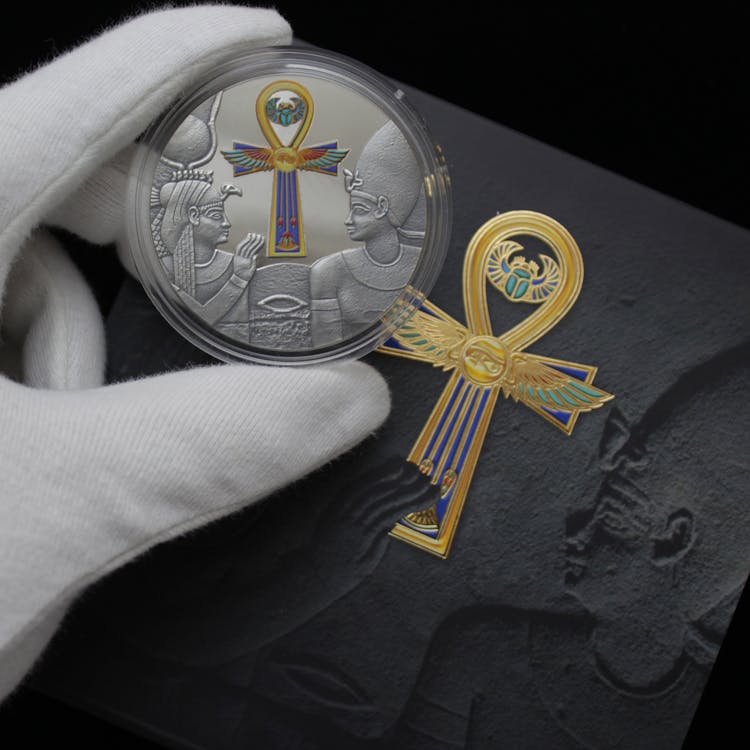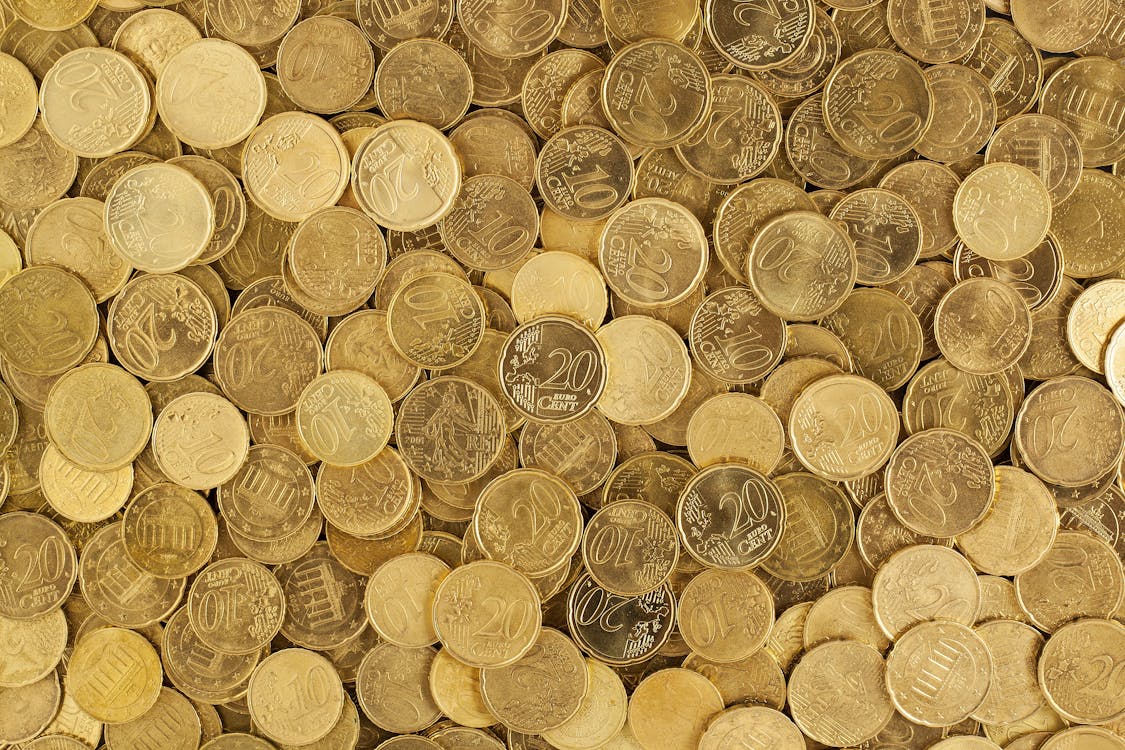Are Commemorative Coins Worth Anything?
In the world of numismatics, commemorative coins hold a special place. Beyond their intrinsic value, these coins encapsulate history, culture, and artistry, making them prized possessions for coin enthusiasts.
But what is the worth of a Singapore commemorative coin beyond their aesthetic appeal and purchase price? Let's delve into the fascinating world of commemorative coins to uncover their unique monetary value, if any.
The Purpose of A Commemorative Coin
The Legal Tender of A Commemorative Coin
A commemorative coin is also known as "special-issue coins", as they are minted to honor significant events, people, or places and not for general circulation. Due to this, not all commemorative coins have legal tender status, meaning they cannot be used as currency. Commemorative coins are often produced in limited numbers and may feature unique designs, finishes, or denominations.
On the other hand, legal tender coins are official currency issued by a government or monetary authority and are accepted as a medium of exchange for goods and services within the country of issuance. These coins have a designated face value and are widely circulated in everyday transactions.

A Way To Celebrate History
Throughout history, commemorative coins have been used to memorialize important milestones, from royal coronations to historical anniversaries. These coins offer a tangible connection to the past, preserving moments of significance for future generations.
Understanding the Value of Commemorative Coins
Factors Influencing Value
The value of commemorative coins is influenced by various factors, including rarity, condition, historical significance, and demand. Rare and historically significant coins tend to command higher prices in the numismatic market.
The following factors play a huge part in determining the value of commemoratives in circulation:
-
Historical Significance and Rarity: Coins associated with important historical events, significant figures, or milestone anniversaries tend to be more sought after by collectors. Additionally, the rarity of a commemorative coin can greatly impact its value.
-
Condition and Preservation: Coins that are well-preserved, with minimal wear, scratches, or damage, are typically more desirable to collectors. Grading agencies, such as the Professional Coin Grading Service (PCGS) or the Numismatic Guaranty Corporation (NGC), assess the condition of coins on a scale from Poor (P) to Mint State (MS) to determine their grade and value.
-
Market Demand and Trends: Changes in collector preferences, economic conditions, or historical events can influence the demand for specific coins and their corresponding values. Coins associated with popular themes, iconic designs, or significant anniversaries may experience increased demand and appreciation in value over time.
By considering these factors, we can make informed decisions when acquiring or evaluating commemoratives, recognizing their potential for appreciation and understanding its face value.
Numismatic Coins and Notes
Numismatic coins are coins that hold value beyond their intrinsic metal content. Unlike bullion coins, which are primarily valued for their precious metal content, these coins derive their worth from factors such as rarity, significance, condition, and market demand.
There are a wide range of categories, including ancient coins, medieval coins, modern coins, commemorative coins, error coins, and more. These older coins can also serve as investments, as their value may appreciate over time in the collector market.
Rarity and Collectibility
One of the primary drivers of value in commemorative coins is rarity. Limited mintages and unique designs contribute to the collectibility of these coins, making them sought after by collectors.
4 Precious Metals Used in Commemoratives
Some of the most common precious metals used in the production of these coins include:
-
Gold: Gold coins is highly valued for its rarity, beauty, and enduring worth. Gold coins have a warm, lustrous appearance and are prized by collectors and investors alike. A commemorative coin made from gold are often struck in various purities, with 24-karat gold being the purest and most valuable.
-
Silver: Commemorative silver coins is another popular choice due to its affordability, durability, and aesthetic appeal. Commemorative silver coins have a bright, white color and are valued for their shine and intrinsic worth. A commemorative coin made from silver are often struck in various purities, with .999 fine silver being the most common.
-
Platinum: Platinum is a rare and precious metal known for its strength, durability, and resistance to tarnishing. Platinum coins have a distinctive silvery-white color and are prized for their rarity and beauty. A commemorative coin made from platinum are relatively rare but highly sought after.
-
Palladium: Palladium is a relatively new addition to the world of commemorative coins, valued for its rarity, purity, and unique properties. Palladium coins have a bright, silvery-white color and are valued for their beauty and scarcity. Just like a platinum commemorative coin, palladium ones are relatively rare as well.
The melt value of a commemorative coin depends greatly on the intrinsic worth of the metal content contained within the coin. It is typically determined by the current market value of the precious metals used in its composition e.g. silver or gold. Unlike the face value or numismatic value, which may fluctuate based on factors such as rarity, condition, and collector demand, the melt value is solely based on the weight and purity of the metal.

For example, a commemorative silver coin or gold coin will have a melt value corresponding to the current spot price of those metals in the market. While the melt value provides a baseline for the coin's intrinsic worth, it does not account for any numismatic premiums associated with the coin. Hence, other factors must be considered to determine its true market worth.
5 Base Metals Commonly Used to Issue Commemorative Coins
-
Copper: Copper is a popular choice for commemorative coins due to its affordability, durability, and malleability. It is often used in the production of circulating coins as well as commemorative issues.
-
Nickel: Nickel is commonly used in the production of circulating coins and is also utilized in the minting of commemorative coins. It offers a silver-white color and is resistant to corrosion, making it a suitable choice for coinage.
-
Brass: Brass, an alloy of copper and zinc, is frequently used in the minting of commemorative coins. It provides a distinctive yellow-gold color and offers excellent durability and resistance to tarnishing.
-
Bronze: Bronze, an alloy of copper and tin, has been used for coinage throughout history and is still employed in the minting of commemorative coins today. It offers a rich brown color and is prized for its durability.
-
Aluminum: Aluminum is a lightweight and affordable metal commonly used in the production of circulating coins and commemorative issues. It offers excellent corrosion resistance and is often used for coins intended for circulation in humid or coastal environments.
These base metals are chosen for their properties such as durability, affordability, and suitability for coinage, allowing for the production of high-quality commemorative coins that are both aesthetically pleasing and functional.
Evaluating the Worth of Commemorative Coins
Market Demand and Trends
When you want to sell commemorative coins, their value is influenced by market demand and trends. Coins featuring popular themes or iconic designs may experience increased demand, driving up their value in the secondary market.
Assessing Condition and Authenticity
The condition and authenticity of a commemorative coin play a crucial role in determining its value. Coins in pristine condition and accompanied by proper documentation are often more desirable to a coin collector.
Common Types of Commemorative Coins
National and International Themes
Commemorative coins can feature a wide range of themes, including national landmarks, historical figures, and cultural symbols. These coins celebrate the rich diversity of nations and highlight significant aspects of their heritage.
Here's a list of notable commemorative coins minted in American history to commemorate special events:
-
Columbian Exposition Half Dollar (1892-1893)
-
Panama-Pacific Exposition Coins (1915)
-
Oregon Trail Memorial Half Dollar (1926)
-
Sesquicentennial of American Independence Half Dollar (1926-1939)
-
United States Bicentennial Coins (1975-1976)
-
Statue of Liberty Centennial Coins (1986)
-
National Purple Heart Hall of Honor Commemorative Coin (2013)
These commemorative coins are a collectable, as they represent a diverse array of themes, events, and individuals significant to American history and culture. Each coin tells a unique story and serves as a lasting tribute to the people and events they celebrate.
Special Editions and Limited Releases
Special edition and limited-release commemorative coins are highly coveted, beyond their face value. These coins often feature unique designs, precious metal compositions, and limited mintages, adding to their rarity and collectibility.
The Investment Potential of Commemorative Coins
Benefits and Risks
Investing in a commemorative coin offers potential benefits such as portfolio diversification, hedge against inflation, and aesthetic enjoyment. However, it's essential to be aware of the risks, including market volatility and fluctuating demand.
Expert Insights and Recommendations
Seeking advice from numismatic experts or a reputable coin dealer can help investors make informed decisions about acquiring commemorative coins. Expert insights and recommendations can provide valuable guidance in navigating the numismatic market.
Where to Buy and Sell Commemorative Coins
Trusted Sources and Platforms
When buying or selling a commemorative coin, it's crucial to work with trusted sources and platforms. Reputable dealers, numismatic associations, and online marketplaces offer avenues for acquiring and selling coins with confidence.
Tips for Safe Transactions
To ensure safe transactions, collectors should research sellers, verify coin authenticity, and obtain proper documentation. Additionally, exercising caution when buying coins online and utilizing secure payment methods can help mitigate risks.
Preserving the Value of Commemorative Coins
Proper Storage and Handling
Proper storage and handling are essential for preserving the value of commemorative coins. A coin collector should store coins in archival-quality holders, away from environmental factors that can cause damage or deterioration.
Regular maintenance and care are crucial for maintaining the condition of commemorative coins. Gentle cleaning, handling with clean hands, and avoiding exposure to harsh chemicals can help prolong the life and beauty of coins.
What Are Proof Coins?
Proof coins are a specialized form of coinage struck using highly polished dies and planchets, resulting in exceptionally sharp detail and mirror-like surfaces. Unlike regular circulation coins, proof coins are produced specifically for collectors and numismatists, showcasing the finest craftsmanship and attention to detail.
They are often distinguished by their flawless appearance, with no signs of wear or handling and highly sought after by collectors worldwide. These coins are typically issued in limited quantities and may feature unique designs or commemorative themes, adding to their allure and value. Overall, proof coins represent the pinnacle of minting artistry and serve as treasured additions to any coin collection.
Conclusion
In conclusion, commemorative coins hold both intrinsic and extrinsic value beyond their monetary worth. These coins offer a glimpse into history, culture, and artistry, enriching the numismatic experience.
By understanding the factors that influence value, evaluating coins with care, and seeking expert guidance, coin holders can unlock the potential of commemorative coins as treasures worth cherishing.
Frequently Asked Questions (FAQs)
What commemorative coins are most valuable?
The value of commemorative coins varies depending on factors such as rarity, demand among collectors, historical significance, and the condition of the coin. Some of the most valuable commemorative coins include those with limited mintages, unique designs, or ties to significant historical events or figures. Examples of valuable commemorative coins include the 1933 Double Eagle gold coin, the 1893-S Morgan silver dollar, and certain modern commemorative coins with low mintages and high demand.
Should you keep commemorative coins?
Whether or not you should keep commemorative coins depends on your personal interests, investment goals, and the specific characteristics of the coins in question. Commemorative coins can hold both numismatic and intrinsic value, making them potentially valuable additions to a collection or investment portfolio. If you appreciate the historical significance, craftsmanship, or aesthetic appeal of commemorative coins, keeping them can be a rewarding endeavor.
Are commemorative coins real?
Yes, commemorative coins are real coins minted by government mints or authorized private mints to commemorate specific events, people, or places. While commemorative coins may have numismatic or collectible value, they are genuine coins with a face value assigned by the issuing authority. However, it's important to distinguish between genuine commemorative coins and counterfeit or replica coins, as counterfeiters may attempt to replicate the designs of valuable commemorative coins for fraudulent purposes.
What is the purpose of commemorative coins?
The purpose of commemorative coins is to honor and celebrate significant events, people, or places in history. These coins serve as tangible symbols of commemoration, celebrating achievements, milestones, or cultural heritage. Commemorative coins are often produced to mark anniversaries, historical milestones, or national celebrations, providing a lasting tribute to the event or individual they honor. In addition to their symbolic significance, commemorative coins may also serve practical purposes, such as raising funds for specific causes, promoting tourism, or fostering national pride.

